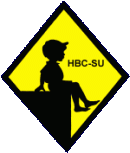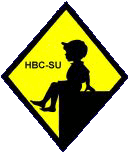
The prepatory school was an innovation in the 19th century. They were schools that prepared younger boys for the public (private boarding) schhols and at the same time protected the younger boys from the rigors involved. The public schools with teenagers could be very rough places. The worst instances of abuses had disappeared by the advent of the 20th century. The older boys still played an important role in governance but by the 20th century were closely monitored by the headmaster and masters. The prep schools followed the institutions and organiation of the public schools with of course the younger boys being more closely monitored. And by the 20th century we no longer see mostly small schools with very limited facilities. Some prep schools by the turn-of-the century were very well estabished with substantial numbers of students and improved facilities. We also see more schools requiring a uniform. Before the turn-of-the century boys wore mostly their own suits with Eton collars. Younger boys often wore sailor suits when they first arrived. After the turn-of-the century we see schools chosing a suit as a school standard as was common in the public schools. World War I was another turning point. We see Eton collars going out style and many schools began adopting colored blazers as part of the uniform which coordinated caps and ties. Many also required short pants and destinctive knee socks. Sandals began to become cimmon. Gradually secondary education expanded. Quite a number of parents who could not afford the public schools, but sent their children to prep schools to prepare them for secondary schools, often grammar schools. World War II was even more of a turning point. After the War, Britain made a major commitment to secondary education. And the Socialist policies of the new Labour Governent adversly affected the economy. This affected the ability of ordinary people to afford private school fees. Unfavorable tax laws also hurt privately owned schools. And by the 1970s we see many small prep schools that had closed or were in the process of closing. Many of the schools survived by convering into charitable trusts toavois onerous taxes. This was a process that often followed the retirement of the original owners. Charitable trusts offered importznt tax bnefits and greater stability. We note many schools simplifying the uniforms. Another develop was coeducation. Many boys' schools began accepting girls as a way of maintaining roles and surviving economically. We note a revival of private schools, including prep schools, by the late-20th century as many parents became concerned by preceived decking stndards inth state schools. Another notable development is that an increasing number of parents, especially the mothers, began concerned aboutvsending younger children to boarding schools. Rolls in day schools increased and the number of day students at boarding schools increased.
The prepatory school was an innovation in the 19th century. They were schools that prepared younger boys for the public (private boarding) schhols and at the same time protected the younger boys from the rigors involved. The public schools with teenagers could be very rough places. The worst instances of abuses had disappeared by the advent of the 20th century and prepm schools were a well estavlished oart of Britosh education. The older boys still played an important role in governance but by the 20th century were closely monitored by the headmaster and masters. The prep schools followed the institutions and organiation of the public schools with of course the younger boys being more closely monitored.
And by the 20th century we no longer see mostly small schools with very limited facilities. Some prep schools by the turn-of-the century were very well estabished with substantial numbers of students and improved facilities. We also see more schools requiring a uniform. Before the turn-of-the century boys wore mostly their own suits with Eton collars. Younger boys often wore sailor suits when they first arrived. After the turn-of-the century we see schools chosing a suit as a school standard as was common in the public schools.
The 1910s was a bifurcated decade. It began as part of the Edwardian era. King Edward VII died (1910), but Edwardian norms and fashion trends continued. It was a time of unbridled optimism and confidence in the future. There was surety about the solid, dependable society. This was especially the case with the upper and middle classes that sent their boys to private schools. until Europe erupted in war. The idea of a boarding school for younger boys to prepare them for the country's elite boarding public schools school for older boys. World War I was another major turning point in so many areas, including school wear. Unlike the public schools, none of the prep school boys at least by mid-decade wold have reached military age during the War. We still see Eton collars everywhere a the beginning of the decade, but by the 1920s the Eton collar and other formal style were declining in popularity. They were still common at the beginning of the decade, but had notably declined by the end of the decade after about 5 years of war. Of course the boys at these schools would have had brothers and fathers in the services. Tumultuous times commonly lead to fashion changes. And the difficulties and privations of the War impacted how many viewed the pre-War fashion standards and conventions. We see more boys at prep schools wearing attached soft collars during the war. Many schools began adopting colored blazers as part of the uniform which coordinated caps and ties. We still see some long stockings, but knee socks were becoming more common, especially for boys and boys wearing shorts rather than straight-leg knee pants or knickers. The idea of a uniform at prep schools was well established. The War essentially bankrupted Britain. We are unsure at this time affected the economic of private schools.
We still see mostly single gender prep schools. Smaller schools might be coed as they neded to increase their numbers. Boys mostlyn war suits. The girls often adopted some of the garmets worn by boys, except for the short pants. Many schools required short pants and destictive knee socks began to appear. The shorts tended to be quite long, still like the knee pants worn in the 1900s and 10s. We no longer see boys wearing long stockings, but sone schools required girls to wear them. Increasingly the girls were earin white socks. Sandals began to become standard. Gradually secondary education expanded. Quite a number of parents who could not afford the public (elite private boarding) schools, but sent their children to prep schools to prepare them for secondary schools, often grammar schools. The prep schools were also commomly boarding schools, but there were day schools in the cities. .
World War II was even more of a turning point. After the War, Britain made a major commitment to secondary education. And the Socialist policies of the new Labour Governent adversly affected the economy. This impacted the ability of ordinary people to afford private school fees.
Here we see a class portrait at a good sized prep school (figur 1). They look like the older boys at the school. We can see the school in the background. The portrait is undated, but we would guess was taken in the late-1950s. The boys wear a colored blazer, school ties, short pants and destinctive knee socks with a colored band. This was a very standard uniform at the time. The boys are not wearing caps, but they almost certainly were part of the uniform. They probably wore sandals, but for special occassions such as a portrait put on dress shoes.
Unfavorable tax laws also hurt privately owned schools. And by the 1970s we see many small prep schools that had closed or were in the process of closing. Many of the schools survived by convering into charitable trusts toavois onerous taxes. This was a process that often followed the retirement of the original owners. Charitable trusts offered importznt tax bnefits and greater stability.
Another important development in the 1980s was coeducation, a trend beginning in the 1970s. Many boys' schools began accepting girls as a way of maintaining pupil roles and surviving economically. We also see most schools setting up pre-prep divisions as away of capturing prep enrollments. This was less common at girls' schools. We note a revival of private schools, including prep schools, by the late-20th century as many parents became concerned by perceived discipline and academic standards in the state schools. We see many families choosing private schools for the first time despite the cost. Earlier generations were primarily the same families. But this began to change in the 1970s and especially the 80s. The prep schools tended to achieve results substantially superior to the state system. Many middle-class families devoted the mother's salaries primarily to pay school fees. Another notable development is that an increasing number of parents, especially the mothers, began concerned about sending younger children to boarding schools. Rolls in day schools increased while the number of day students at boarding schools increased. Fees were substantial. We note quite a number of families choosing prep schools to give the children a good start even though they were unable to continue at private schools with the public schools. State schools spent something like £1,000.annually during the 1980s, although this does not include expenses faced by private schools. Private schooling is expensive. Something like £4,000.annually for day schools, about four times higher than pupil spending at state schools. Boarding schools are considerably more expensive. Interestingly, American costs were about double. Almost all prep schools required uniforms. We note many schools simplifying their uniforms. But most schools still had uniform with blazers or suits. The blazers and suit jackets were not commonly worn during the day. Caps began to disappear in the 970s and many schools did away with them. Most schools continue to require ties. Sweatshirts (jumpers) were very common.. At the end of the decade we see a few schools switching to sweatshirts. We see more boys wearing long pants, but short pants were still common. We also continue to see school sandals.
Related Chronolgy Pages in the Boys' Historical Web Site
[The 1880s]
[The 1930s]
[The 1940s]
[The 1950s]
[The 1960s]
[The 1970s]
[The 1980s]
Related Style Pages in the Boys' Historical Web Site
[Long pants suits]
[Short pants suits]
[Socks]
[Eton suits]
[Jacket and trousers]
[Blazer
[School sandals
